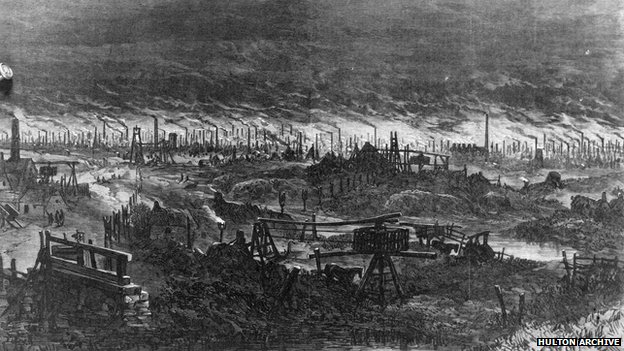Reading the official mouthpiece of the Greenblob (wikipedia) I read:
The NASA Earth Observatory notes three particularly cold intervals: one beginning about 1650, another about 1770, and the last in 1850, all separated by intervals of slight warming.
“Little Ice Age” can only be considered as a modest cooling of the Northern Hemisphere during this period of less than 1°C relative to late twentieth century levels.
Of course the intention here has been to try to deny the natural variation in the climate. However a thought has struck me. I know Scottish industrialisation was well under way by 1750 – because by that time almost every tree in Scotland had been cut down.
In my last article I was exploring what could have caused the 1970-2000 warming, and a prime candidate is the reduction of previous pollution. But the flip side of that coin is that we expect cooling to have occurred when that pollution was first introduced. If that pollution was coal and wood burning in Europe, then the timing is not bad and it would every easily explain the “Northern Hemisphere” little ice-age.
We are all familiar with images like this used by academia to attack our industrial heritage. But could this image show the cause of the little ice-age? Pollution induced cooling, that – thanks to environmental action in the 1970s was then reversed, causing warming?
If so, the following may be very strong proof AGAINST CO2:
- The regionality of the little ice-age
- The warming of the Arctic – without the necessary warming of the Antarctic which is what is needed if the GLOBE is warming
- The warming of the northern hemisphere land – which paradoxically NASA use to scare the pants off the public, but which in fact is PROOF AGAINST GLOBAL warming



When talking of atmospheric ‘pollution’ the role of volcanoes should be in the discussion IMO.
A study in Asia from 2000-2010 concludes: ‘Comparison of the model results to observations reveals that moderate volcanic eruptions, rather than anthropogenic influences, are the primary source of the observed increases in stratospheric aerosol.’
http://onlinelibrary.wiley.com/doi/10.1002/grl.50263/abstract
I agree, but manmade causes act over a much wider area for a much longer period** – and probably act at lower levels. In other words volcanoes may “Punch through” to high levels and disperse in upper atmosphere.
**Not quite the words – but what I mean is man-made causes are much more widespread and the same levels occur for decades at a time. In contrast, a volcano is a single event – but perversely by punching up into the upper atmosphere an individual volcano can have worldwide effects. In contrast, “smog-like” pollution quickly gets washed out by rain.
Yes, but…
‘The Pinatubo eruption pushed an umbrella-like cloud of rock, ash and gas more than 22 miles (35 kilometers) into the sky above the Philippines, and planet-cooling aerosols left by the gas lingered in the air around the globe for as long as three years.’
http://www.livescience.com/14513-pinatubo-volcano-future-climate-change-eruption.html
We need to think of volcanoes as being significant but effectively a different effect.